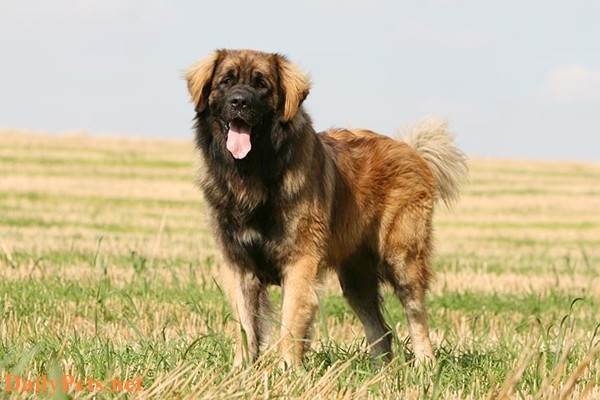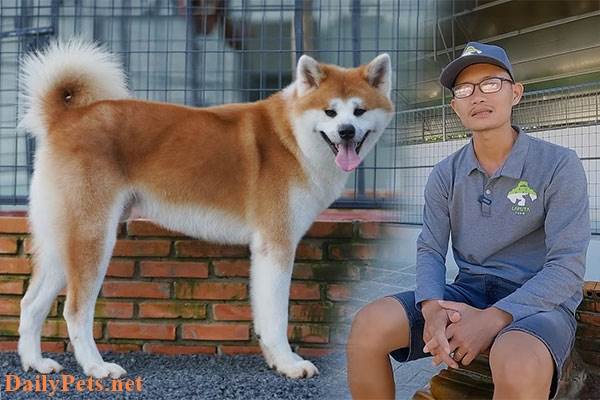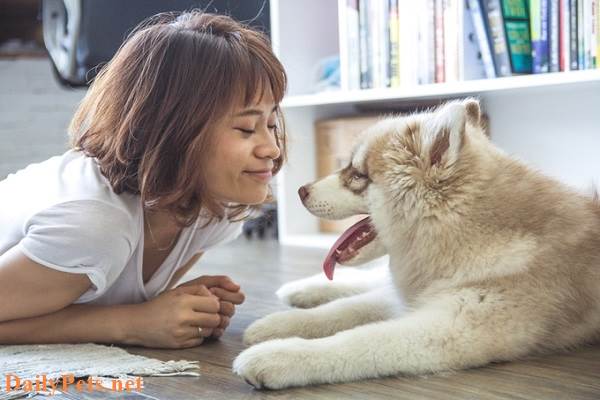Staffordshire Bull Terriers are part of the terrier group and are often mistaken for Pit Bulls due to their similar appearance, but they are distinct breeds.
Staffordshire Bull Terrier origin
The Staffordshire Bull Terrier, often referred to as the “Staffie” or “Staffy,” originates in Staffordshire, England. This breed was developed in the 19th century, primarily for dog fighting and ratting, popular pastimes in the working-class communities of Staffordshire and the surrounding areas.
The Staffordshire Bull Terrier is believed to result from crossing Bulldogs with various Terrier breeds, including the Manchester Terrier and the now-extinct White English Terrier. The goal was to create a small, agile, yet powerful, tenacious dog suitable for various tasks, including hunting vermin and participating in dog fights. These early dogs were known for their strong jaws, athleticism, and courage.

Staffordshire Bull Terrier Dog.
Over time, dog fighting was banned in the United Kingdom, and breed enthusiasts shifted their focus toward promoting the Staffordshire Bull Terrier as a companion and family dog. The breed’s temperament was improved through selective breeding, and it became known for its loyalty, affection, and good nature, especially towards children.
In 1935, the Staffordshire Bull Terrier was officially recognized as a breed by The Kennel Club in the United Kingdom. Today, it is a popular breed known for its friendly disposition, loyalty, and love for its human companions.
Physical characteristics of the Staffordshire Bull Terrier
The height of the Staffordshire Bull Terrier ranges from 14 to 16 inches (36 to 41 cm), and weight ranges from 24 to 38 pounds (11 to 17 kg). The Staffordshire Terrier was recognized by the American Kennel Club in 1974.
The Staffordshire Bull Terrier’s short, coarse coat sits close to its body, giving it a shiny, sleek appearance.
Staffordshire dogs come in a variety of colors, including red, fawn, black, blue, white, brindle, and a variety of bicolors, often with white as an ingredient.

A different type of dog is also popular here, classified as a separate breed called the American Staffordshire Terrier, often written Amstaffs for short. These dogs are not as intimidating as the purebred American Pit Bull but are similar to their British ancestors’ temperament. For both types of Staffordshire dogs, owners can choose their coat color. They have short, colorful fur.
Staffordshire Bull Terrier Personality Traits
The nature of the Staffordshire Bull Terrier is quite stubborn and sometimes aggressive because, in their veins, there is still a tendency to bite other dogs of any breed that cross their path. Therefore, it is an essential prerequisite to have a strict training regimen before letting them out, especially when raising a terrier of this type in the countryside, where they easily clash with other types of dogs. However, their general tendency is to become loyal pets, and they often prove to be brave guards willing to sacrifice their lives to protect their owner’s property.
Over time, the Staffordshire Bull Terrier dog became known for its bravery, aggressiveness, and daring to “fight until the last breath.” This makes them very bloodthirsty, preferring to bite any creature outside the group quietly without growling or barking threats. Unlike other dogs that bite and then release immediately, the Staffordshire Bull Terrier, after biting the victim with its jaws as hard as pincers, continues to grind the biting area until it breaks loose until the “prey” dies or faints. If their opponent is another dog, then only one of the two dogs must die.
How to Take Care of a Staffordshire Bull Terrier
Staffords are not considered demanding in terms of maintenance. They have short coats, excellent immunity, and a good appetite.
Pay attention to the following aspects: skin and coat, hygiene, teeth, ears, eyes, and nails.
Make sure to monitor the physical condition of the Staffordshire Bull Terrier. Your pet should not be overfed or put on a diet without adequate reasons. Additionally, physical activity should be compatible with endurance and temperament.
Coat Care for Staffordshire Bull Terrier
After a walk, you can clean the coat of Staffordshire Bull Terrier with a special soft-bristle brush to remove the dead skin cells and massage the skin. As a result, blood rushes to the dermis, nourishing the hair follicles with essential components and preventing common skin issues such as dermatitis, ringworm, mange, greasy seborrhea, and others. Furthermore, Staffordshire dogs can be carefully washed under a warm shower and dried with a personal towel. However, this measure is only applied when a specific dog odor appears.
The ears and eyes of Staffordshire Bull Terrier should be cleaned several times a week with cotton pads, optionally moistened with an antiseptic suitable for the area (e.g., chamomile tea). Use a separate sponge for each ear and eye.
Nail of Staffordshire Bull Terrier care involves trimming them when curved and touching the ground. If possible, take your pet for walks more often on paved roads, which naturally grinds down the nails effectively. You should cut them with a special tool that can be purchased at a pet store. It is better to avoid using scissors and manicure files.
Regarding the Staffordshire walks, dog owners advise against taking the animal out in hot weather (from 23h to 16h) and during extreme cold. In negative temperatures, walk the Staffordshire Bull Terrier for a short period only to meet its needs. The lack of an undercoat and short fur does not protect the dog from the cold, so the risk of catching a cold or even pneumonia increases.
Staffordshire Bull Terrier food
The Staffordshire Bulldog’s diet should be well-balanced. About 70% of the menu should include meat, fish, and offal. The remaining 30% is allocated to grains (rice, buckwheat), vegetables (zucchini, carrots, beets), dairy products, and sour milk. It is forbidden to indulge the dog with sweets, salty snacks (crackers, chips, biscuits), bakery products, and potatoes.
The Staffordshire dog’s morning meal can consist of calcium-rich foods (milk, cottage cheese, kefir). You can give regular porridge boiled in milk or meat broth for lunch. Dinner should contain meat and vegetables. The second dinner can also consist of meat or fish (previously scalded with boiling water). You can also give boiled quail eggs to the dog once a week.
However, dog experts recommend switching Staffordshire to dry food because it contains all the nutrients and vitamins in the right proportion for the animal.
Don’t forget about water. It should be poured fresh in the morning and changed daily. It is advisable to use moderately purified water.
The Staffordshire Bull Terrier will become your reliable guardian, patient friend, and beloved pet. Providing the puppy with healthy socialization and proper care is important, allowing you to raise a well-mannered and loyal dog.
Staffordshire Bull Terrier lifespan
Staffordshire Bull Terrier can live outdoors with mild weather. It does not tolerate cold well. This dog breed is affectionate, so it will do better as a house or apartment pet if it has an open space to exercise.
The Staffordshire Bull Terrier is an athletic breed requiring an active exercise regimen and daily walks. Regularly brush their fur every day and bathe them when necessary. They should always be kept on a leash when walking outside.
The Staffordshire Bull Terrier has an average lifespan of 10 years to 16 years; the Staffordshire Bull Terrier breed is often susceptible to serious health problems such as canine hip dysplasia (CHD) and the occasional clouding lens; some animals are also susceptible to cleft palate. They cannot tolerate cold weather.
Staffordshire Bull Terrier vs. Pitbull
Origin
Staffordshire Bull Terriers originated in the Staffordshire region of England. They were bred for bull-baiting and later became popular in dogfighting and as working-class companions.
The American Pit Bull Terrier was originally bred for bull-baiting and later became a farm dog and family companion in the United States.
Size Discrimination
Staffordshire Bull Terriers are typically smaller than Pit Bulls, with an average weight ranging from 24 to 38 pounds (11 to 17 kilograms) and a height of 14 to 16 inches (36 to 41 centimeters).
American Pit Bull Terriers are generally larger than Staffordshire Bull Terriers, with an average weight ranging from 30 to 85 pounds (14 to 39 kilograms) and a height of 17 to 21 inches (43 to 53 centimeters).
Distinguishing Shapes
The Staffordshire Bull Terrier and the Pitbull breed have strong and sturdy bodies. Pitbull dogs have a lean and balanced body. They also have a short, muscular tail, often described as resembling a whip. In contrast, the Staffordshire Bull Terrier is medium-sized, with an exceptionally broad and firm chest.
Face Discrimination
Pitbull dogs have round faces with high-set ears. Their jaws are wide, and their noses taper upward. In particular, they do not have any wrinkles on their faces.
The Staffordshire Bull Terrier breed usually has a rounder head. The head is short but wide; their ears are not too high like the ears of Pitbull dogs.
Color Distinction
The color of Pitbull dogs is very distinct; they can have a coat of any color or pattern. However, the Staffordshire Bull Terrier breed is significantly different. Their fur is usually uniform in color. Such as black, white, fawn, red… However, sometimes, white can be combined with any of these colors.
Personality Discrimination
Pitbull dogs are courageous but stubborn and have little tolerance for other animals. This is because they are frequently used for combat. They have a high hunting ability and often become more aggressive towards other animals. Such as dogs, cats, and other smaller animals.
Staffordshire Bull Terriers are considered by many to be more adorable than you might expect. They are energetic, boisterous, and love to play. They also tend to be well-behaved with dogs and other animals. However, they can also attack if they feel threatened.
The Staffordshire Bull Terrier and the Pitbull are not considered to be naturally aggressive towards humans. However, the owner’s education and training will affect whether they are dangerous. Please attention.





